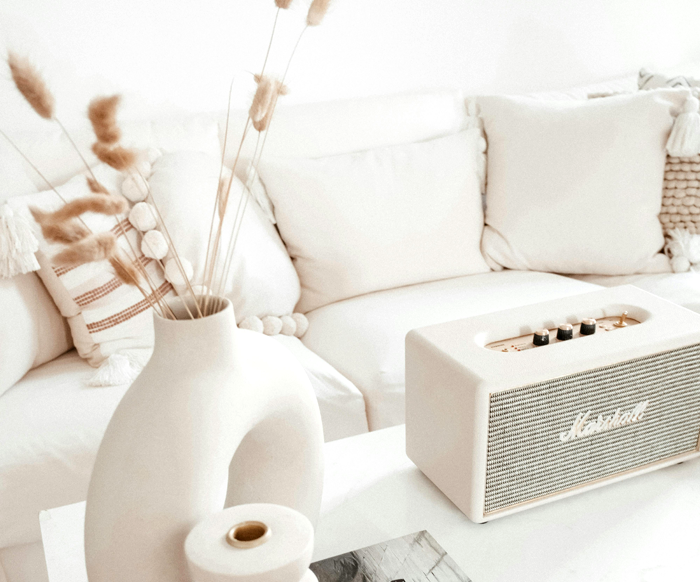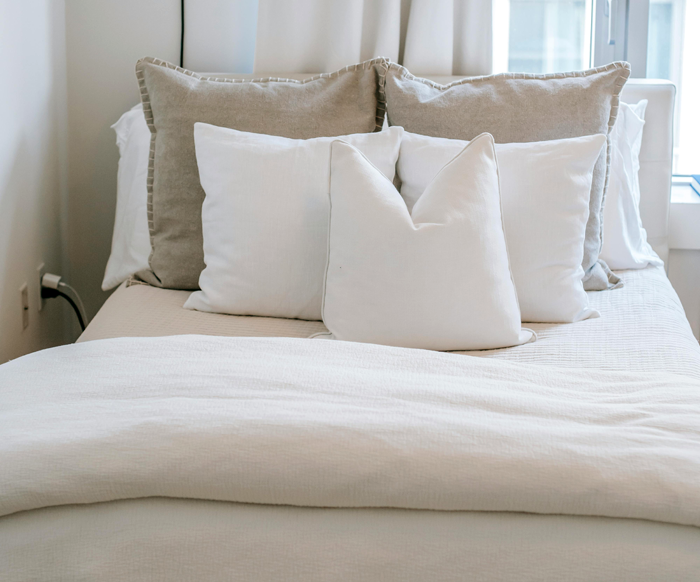
The quality of air we breathe is often overlooked, even though it is one of the most fundamental aspects of our well-being. Recently, when I considered investing in a portable air purifier for my home, I discovered what to look for and how to decide. I hope these findings will be helpful if you are on the same path.
While we often associate pollution with outdoor environments, the truth is that indoor air quality is even poorer and more polluted! From dust and pet dander to volatile organic compounds (VOCs) emitted by household products, the air inside our homes can have a significant impact on our respiratory health and overall well-being.
What Are Causes Of Indoor Air Pollution
Unlike outdoor air pollution, which is often associated with industrial emissions and vehicle exhaust, indoor air pollution originates from a variety of sources that can be found right within our living environments. Sources of indoor air pollution are diverse and include everyday activities such as cooking, cleaning, and even furniture and building materials.
♦ Dust is a common indoor air pollutant composed of tiny particles of dirt. It can accumulate on surfaces and become airborne, leading to respiratory irritation, allergies, and asthma symptoms.
♦ Pet dander consists of tiny flecks of skin shed by pets, such as cats and dogs. These microscopic particles can linger in the air and on surfaces, triggering allergic reactions.
♦ Pollen, particularly during pollen seasons, can enter our home through open doors and windows or be carried indoors on clothing and shoes. Indoor exposure to pollen can also cause allergic reactions.
♦ Volatile Organic Compounds (VOCs) are a group of chemicals emitted as gases from various household products and materials, including paints, cleaning products, furniture, and building materials. Prolonged exposure to VOCs can lead to respiratory irritation, headaches, and even more serious health effects over time.
♦ Tobacco smoke is a significant indoor air pollutant. Secondhand smoke from tobacco poses risks to nonsmokers, including respiratory problems, cardiovascular diseases, and even cancer. Thirdhand smoke, which refers to the residual chemicals left on surfaces after smoking, can also contribute to indoor air pollution.
♦ Mold and mildew thrive in damp, humid environments and can release spores into the air, causing respiratory issues and exacerbating allergies and asthma symptoms. Indoor mold growth is often associated with water damage, leaks, and poor ventilation.
♦ Household chemicals from household products release harmful fumes into the air, including cleaners, disinfectants, pesticides, and air fresheners. Continuous exposure to these chemicals can have adverse effects on respiratory health and overall well-being.
Overwhelming, isn’t it? There are more health symptoms caused by indoor air pollution, such as fatigue, headaches, dizziness, and poor sleep. It is obvious that we certainly can’t get rid of all those pollutants a 100%, but there are some strategies we can implement to make indoor air as clean and healthy as possible. One of them is air purifiers, as a helpful solution with their innovative technology.
How Air Purifiers Work?
Air purifiers offer a solution to combat indoor air pollution and improve the quality of the air we breathe. These devices work by filtering out pollutants and contaminants, leaving behind cleaner, fresher air. Basically, they use fans to draw air in through one or more filters, trap various contaminants, and then re-circulate the cleaner air back into the room.

What To Look For When Choosing An Air Purifier?
There are several types of air purifiers available on the market, each employing different technologies to achieve this goal. But the most important variable in an air purifier is the filter:
High-Efficiency Particulate Air (HEPA) filters, for example, are highly effective at capturing airborne particles such as dust, pollen, and pet dander. They are capable of collecting at least 99.5% of particles in the air that are 3 microns or less in size. Furthermore, their effectiveness depends on how tightly bound the fibers are (usually expressed as a rating from MERV 12 to MERV 17)
Activated carbon filters excel at removing odors and VOCs
UV-C purifiers use ultraviolet light to neutralize bacteria, viruses, and mold spores, further enhancing indoor air quality.
Selecting the right air purifier for your needs is crucial to maximizing its effectiveness. Consider factors such as:
– size of the room or area you wish to purify,
– specific pollutants you want to target,
– and your budget
Look for air purifiers with a high CADR (Clean Air Delivery Rate) rating, which indicates their efficiency in removing airborne pollutants. Additionally, pay attention to the type of filtration technology used and the recommended maintenance schedule to ensure optimal performance.
Get the monthly newsletter with latest news and promotions!
Thank you!
You have successfully joined our subscriber list.
Common Concerns
Despite their many benefits, some people may still have reservations about using air purifiers. Concerns about noise levels, energy consumption, and effectiveness against specific pollutants are common. However, advancements in technology have led to quieter, more energy-efficient air purifiers that are highly effective at removing a wide range of pollutants.
When chosen and positioned correctly, with regular maitenance, including filter replacement and cleaning, air purifiers can provide significant health benefits.
What other strategies will work?
Even though air purifiers are worth investing to improve indoor air quality, they won’t liberate us from usual housecleaning practices in our home to strategically minimize the amount of indoor pollutants. Other tactics and essential strategies for creating a healthier indoor environment should include:

♦ replace conventional cleaning products with natural ones
♦ use natural personal care products
♦ replace old furniture
♦ choose less toxic mattresses
♦ clean rugs, carpets and bathe your pets
♦ air your home regularly
Moreover, adding natural ways to improve indoor air is always a plus, such as Himalayan Salt Lamps and plants.
Even with all of these additional practices, air purifiers are needed nowadays to effectively combat and reduce indoor air pollutants and toxins. The impact of air purifiers on health and well-being is not just theoretical—countless individuals have experienced tangible improvements after incorporating these devices into their homes. From allergy sufferers finding relief from persistent symptoms to families breathing easier and sleeping better knowing their indoor air is clean and safe.
Final Thoughts
In conclusion, investing in an air purifier is not just a luxury—it’s a proactive step towards safeguarding your health and creating a healthier home environment.
By removing harmful pollutants from the air, air purifiers can alleviate allergy symptoms, reduce asthma triggers, and improve overall respiratory health. With a wide range of options available on the market, there’s an air purifier to suit every need and budget. Take control of your indoor air quality today and breathe easy knowing that you’re taking care of yourself and your family.
Let's connect
Sign Up for news and special offers
+ get our FREE guide!
Thank you!
You have successfully joined our subscriber list.
Check your email!



